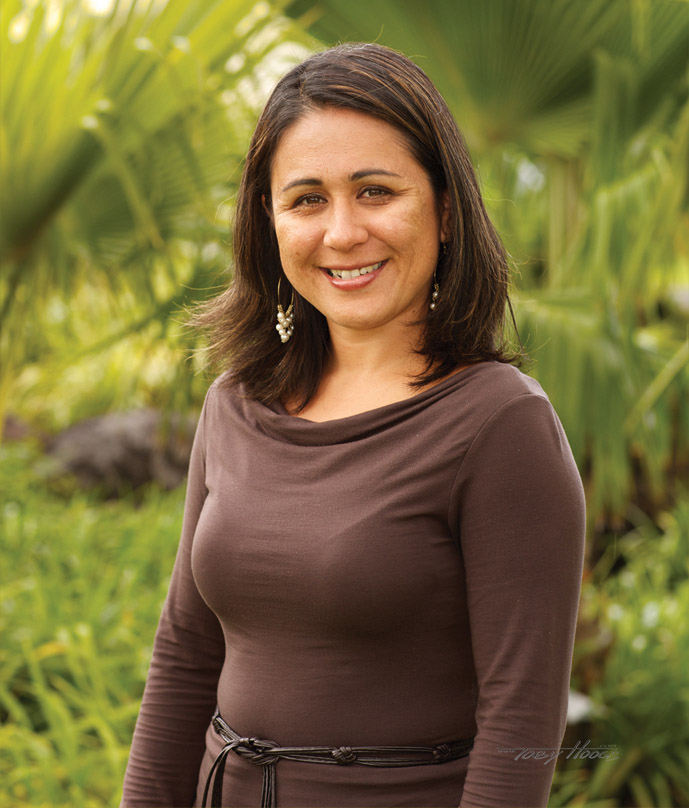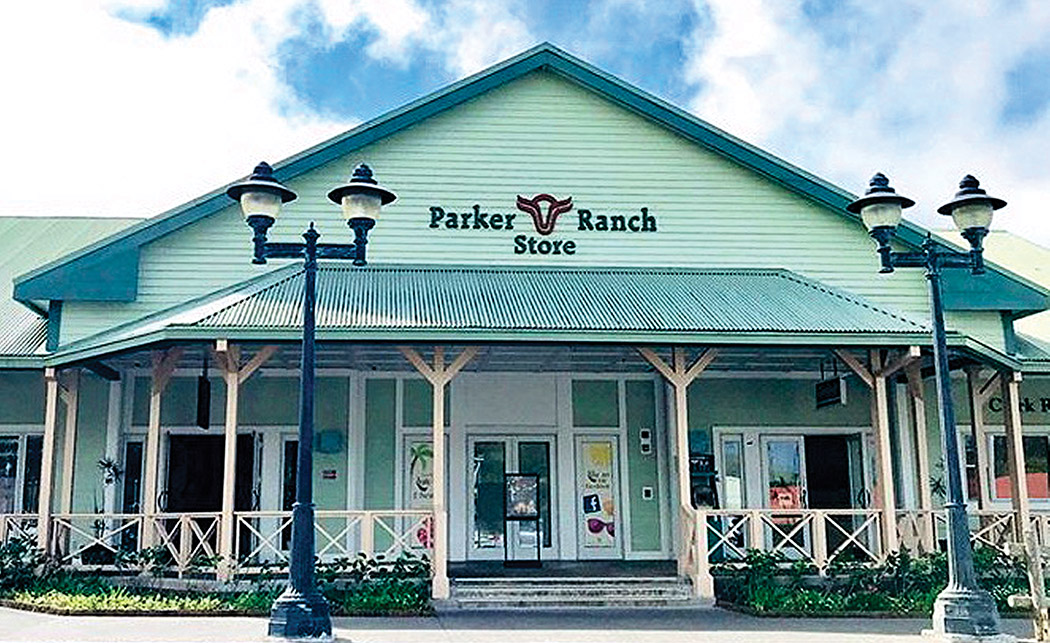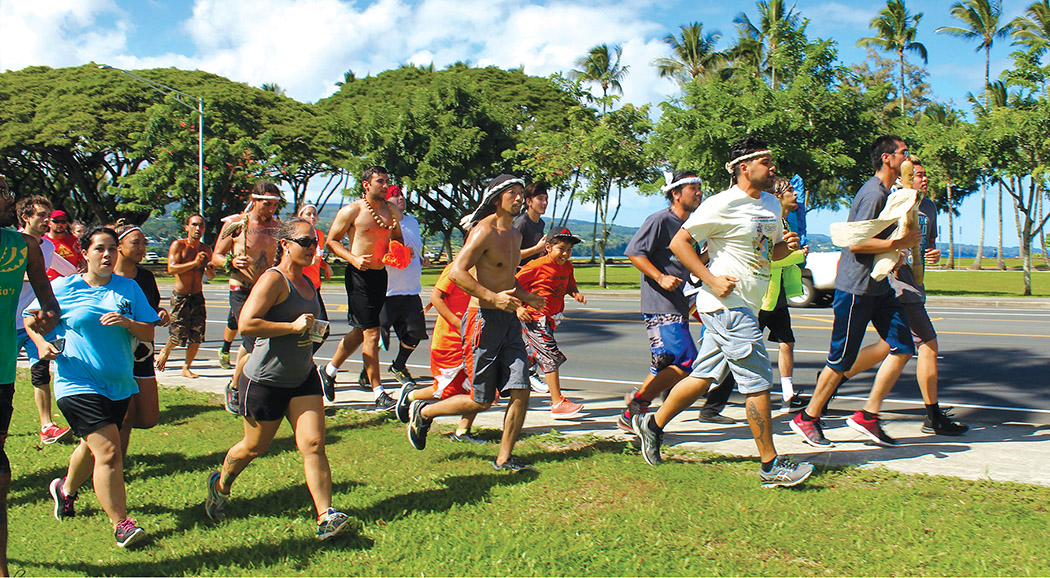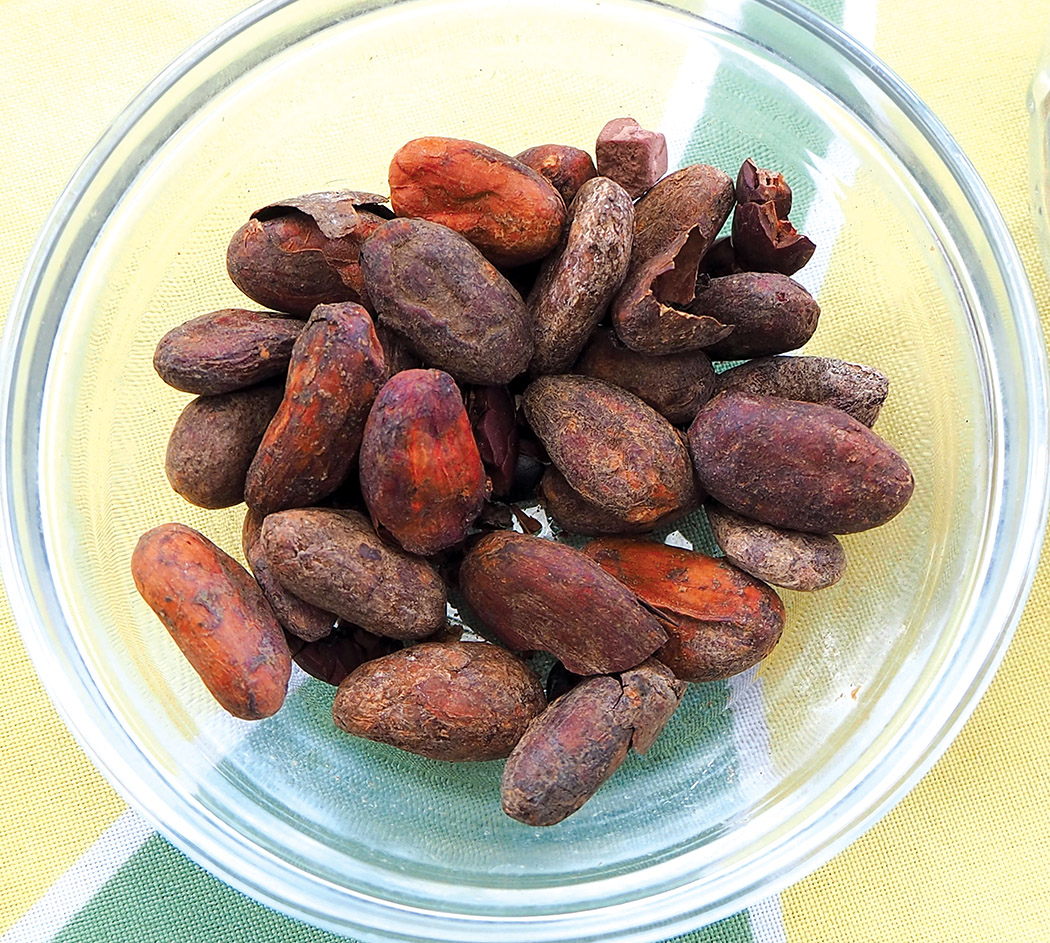
For the Love of Cacao: Highlighting East Hawai‘i Cacao Farmers
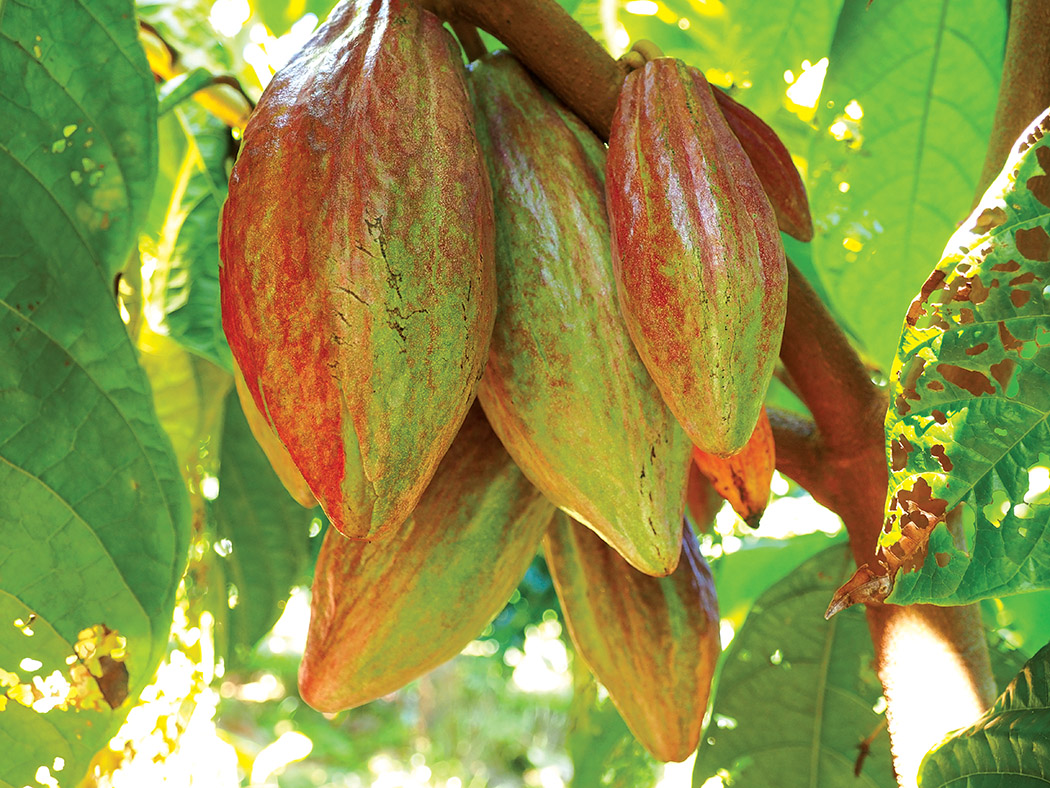
By Brittany P. Anderson
A Hawai‘i Island farmer once told me, “Plant some; if it grows, plant some more,” and that’s just what East Hawai‘i cacao farmers are doing. From the lava scalded shores of Puna to the rolling hills of Waimea, cacao growers up and down the east coast tend to trees that yield one of the most popular flavors in the world—chocolate.
Grow What You Love
By all accounts, cacao shouldn’t thrive in Hawai‘i. The ideal growing conditions are within the cacao or chocolate belt, a band that extends about 20 degrees in latitude north and south of the equator. The middle of Hawai‘i Island lands at 19.5 degrees north, just barely falling within the narrow growing region.
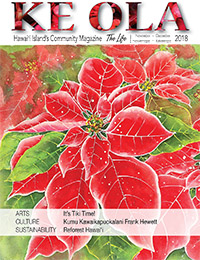
Chocolate is made from the seed of the cacao tree. When in bloom, tiny pink-striped white flowers dot the trunks and branches of the stout broad-leafed tree. A small flower deserves an even smaller pollinator. In other cacao growing countries, bees and moths pollinate the beautiful buds, yet Hawai‘i Island is abundant with the minute Forcipomyia midges (small flies)—the ideal cacao pollinator. These midges mostly live in banana plants but adore cacao flowers, too. Because of an abundance of the midges, trees on the east side of Hawai‘i Island yield more cacao per tree than other regions.
Once the flower is pollinated, a cacao pod forms. The football-shaped pod has deep ridges and develops into a range of colors rivaling any rainbow. Cacao trees thrive with consistent year-round warm to hot temperatures, high humidity and an abundance of rain, all overwhelmingly prevalent in East Hawai‘i.
The husband-wife duo of Kahi Ola Mau Chocolate Farm, Mike and Rhonda Pollard, tend to their 350 cacao trees up the Hāmākua Coast in Honoka‘a. Mike, farmer and chocolate maker, quickly dismisses the “standard” idea of where cacao should grow. “While it is the north pole of the cacao growing region, the ocean creates great conditions for us, and at six miles north of 20 degrees, cacao thrives.”
The seminars at the Big Island Chocolate Festival hooked Rhonda from the start. “It was fascinating, something different, up-and-coming in Hawai‘i. Cacao is a unique crop that everyone loves.” One lecturer had a cacao pod, and after class Rhonda asked, “Can I have your pod?” He handed it over. She took it home and thought, “I think we can grow this.”
Cacao seeds were planted, sprouted, and thrived, “so we planted them all,” Rhonda says with a giggle. When asked what he likes most about growing cacao, Mike quips, “Because you get to make chocolate from it and chocolate is delicious.” Also, the expanding cottage industry provides a viable source of income.
Mike explains, “The magical thing about Hawai‘i is the demand for Hawaiian cacao is high. Most farmers have realized that, and are making chocolate because the profit margin potential is so huge. For now, it is a really good industry for Hawai‘i Island farmers because there is a high demand for it as finished chocolate.”

A Bittersweet History
Some attribute the first cacao in Hawai‘i as being planted in the garden of King Kamehameha I by his lead horticulturist, Don Marin. It was said to be an ornamental token when hot chocolate shops were the “Starbucks” of their time. In the early 1900s, Dole planted cacao as the demand for chocolate soared; however, the small ventures in Hilo and Puna couldn’t quite take hold. With World Wars I and II, trade routes were disrupted, and despite rising prices, cacao didn’t hold farmersʻ interests.
In 1986, Jim Walsh tried to sprout a profitable cacao industry with the help of Hershey’s, the chocolate giant. A businessman from Chicago, he blazed the trail for importing cacao trees. He even established a cacao research center in Hilo, which served as the quarantine location. Jim worked with state and federal governments to obtain approval for importing the crop since no American regulations existed at the time. He planted 18,000 trees; however, due to severe mismanagement, poor growing conditions, and high expectations, the venture folded in the mid-1990s with a fanfare of lawsuits.
What these failed attempts have in common is that they centered around growing cacao and not on making chocolate in Hawai‘i. The goal was always to create a commodity, but the cacao is a raw asset, not a finished product. The price of cacao is volatile, and higher-producing countries use much cheaper labor than available here. Cacao trees take up to five years to steadily produce, and by the time trees mature the fickle market has already shifted. East Hawai‘i cacao farmers are betting the third time’s the charm.
Beans, the Magical Fruit
East Hawai‘i farmers generally harvest September through May, which is nearly year-round. The ripe pods are harvested by hand, clipping each fruit at its attachment to the trunk so as not to damage the fruit stem, which turns into another flower.
The leathery pod is cracked open with a machete or mallet to reveal the white mucilage-covered seeds all packed tightly like a wet corn cob. This fruity flesh that covers each seed tastes light and sweet, similar in flavor to lychee. Then the seeds are fermented. Fermentation develops the chocolate flavor and removes the white fleshy covering that readily absorbs water, which makes the drying phase easier, which comes next. Cacao seeds are fermented for five to eight days, carefully monitored to ensure the right amount of fermentation occurs.
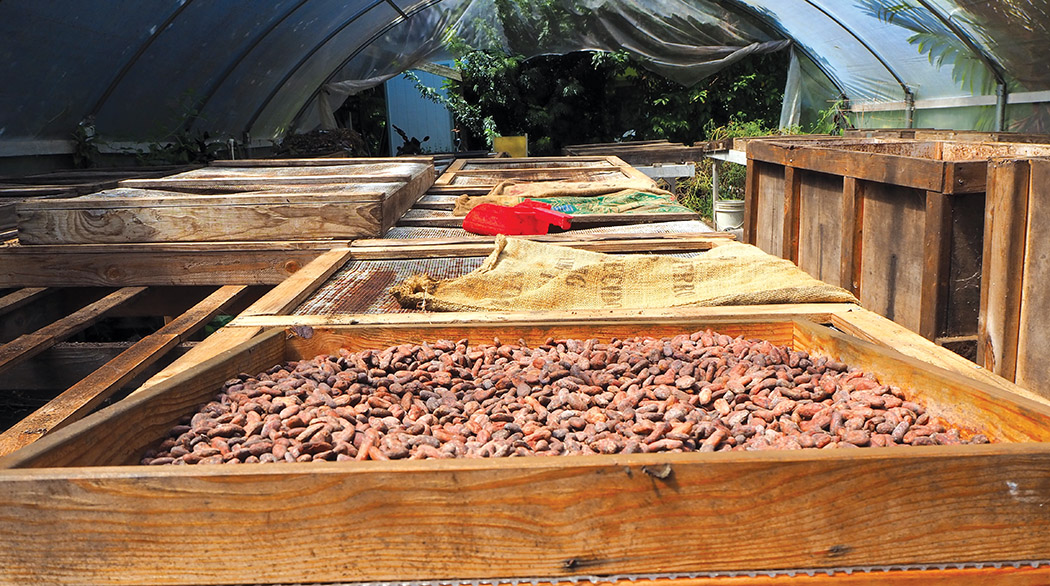
Tom Sharkey, known for his Hilo Sharks Coffee, is the Johnny Appleseed of eastside cacao. His coffee shop in Honomū doubles as a chocolate shop these days, stocked with chocolate bars, cacao nibs, and espresso chocolate bars (a personal favorite). Tom was an early cacao adopter at his Pāpa‘ikou coffee farm, planting his first trees in the summer of 2000.
“We planted them in the summer and went on vacation. When we came back, the beetles had eaten all the leaves,” Tom says in a heavy, serious tone. “From then on I spent the entire night squeezing rose beetles, and that lasted for six months.”
For the past 15 years, Tom has been sprouting cacao seeds—selling them, giving them away, and encouraging everyone to plant cacao. “There is so much land out there, and our eastside quality is really good,” Tom explains.
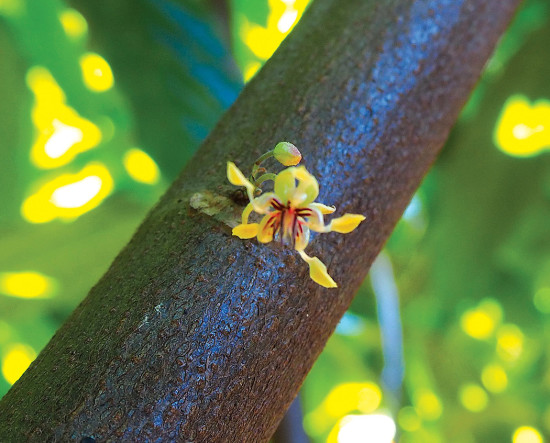
Today, Tom mostly uses leased land where he has established cacao orchards. However, he admits the magic is in the fermentation process. Colin Hart, a graduate of UH Hilo College of Agriculture and the College of Tropical Agriculture and Human Resources (CTAHR) graduate research assistant, has been working with Tom for several years refining the fermentation method. “He has a very scientific approach to the fermentation process,” Tom says of Colin, “I’m lucky because he’s going to be in high demand really soon.” Colin’s current research, funded by Hawai‘i County Research and Development and the US Department of Agriculture, centers around finding alternative methods of cacao fermentation and drying that are better suited for East Hawai‘i’s humid climate.
After the beans are fermented for several days, they go outside onto wire mesh tables to dry under the cover of a greenhouse. Once dry, the beans are roasted, then coarsely ground and made into chocolate.
Growing Agri-Tourism
Many cacao farmers on Hawai‘i Island’s east coast offer bean-to-bar workshops where guests can get a taste for farming and the chocolate-making process. “People want hands-on experiences, people want to learn and see where their food comes from,” says Maddy Smith, owner of Barefoot Chocolatini, a chocolate eco-tour in East Hawai‘i.
On one of her tours, Maddy escorts a group around the farm, pointing out the various types of plants and diving deep into the different varieties of cacao. She offers a hands-on workday from harvesting off the tree to post-harvest production during the season. “People love that, they like to get their hands dirty,” Maddy explains.
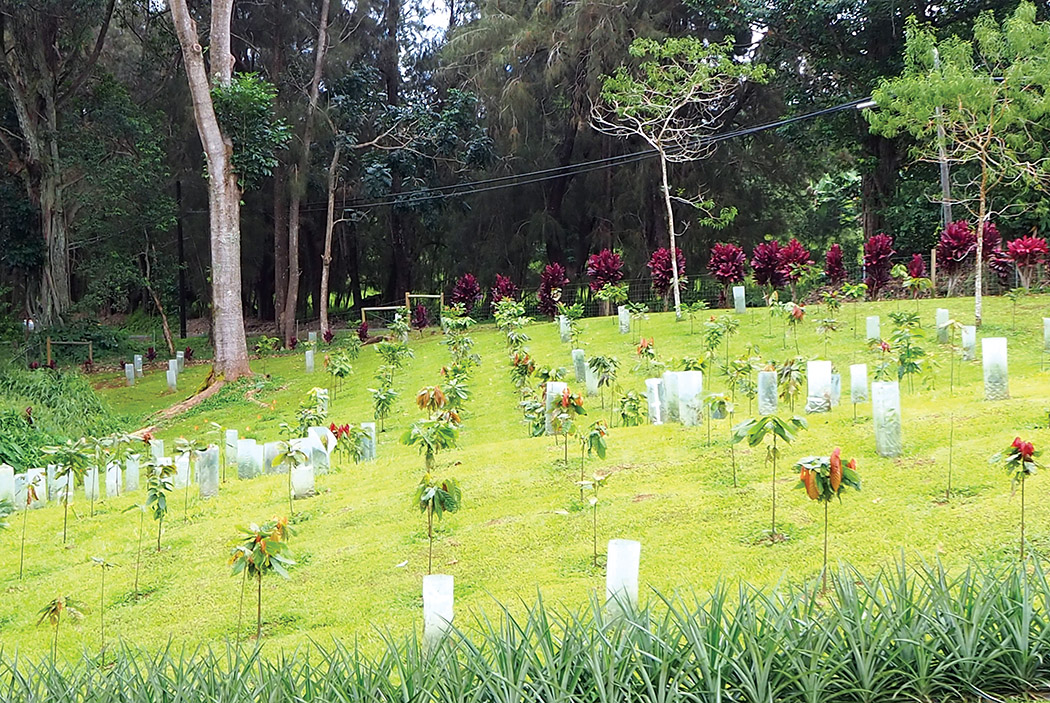
East Hawai‘i cacao growers welcome farm tours and workshops. Many of the farms like Kahi Ola Mau Chocolate Farm, Tom Sharkey, Hawaiian Sanctuary in Pāhoa, and eco-tours like Barefoot Chocolatini, are embracing agri-tourism as a viable secondary farm income as well as sharing their passion for chocolate. “Hawai‘i is becoming a worldwide destination for chocolate; my goal is to help make Hawaiian chocolate known for the artisanal bean-to-bar,” Maddy says.
On a sunny day in Honoka‘a, Mike shares Kahi Ola Mau Chocolate Farm with a couple visiting from Michigan. “My absolute favorite part is meeting new people and teaching them about sustainable farming methods and then tasting chocolate with them,” Mike says in his open-air chocolate tasting room.
A common thread amongst Hawai‘i Island’s east coast growers is their love of all things chocolate. From the cultivation of their trees to the hands-on processing, and then spinning beans into delicious chocolaty goodness, farmers embrace each step with care and intention. Above all, sharing the joy of chocolate with anyone and everyone sets this generation of cacao farmers on the east side of Hawai‘i Island apart from previous growers. “I’ll teach anyone who wants to learn,” Tom says, “because, my dear, if you could grow chocolate, why wouldn’t you?” ❖
Photos by Brittany P. Anderson
For more information: easthawaiicacao.org
